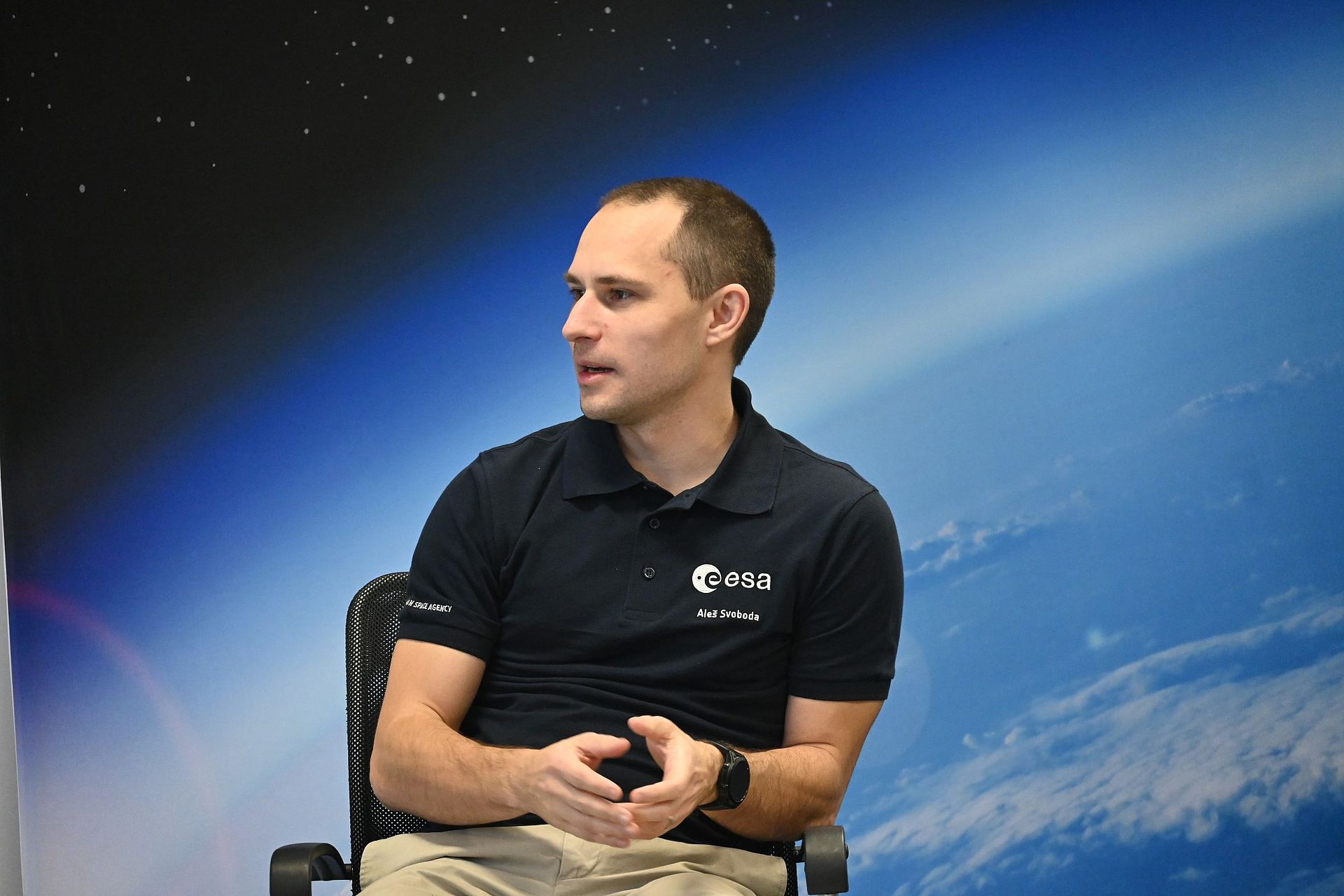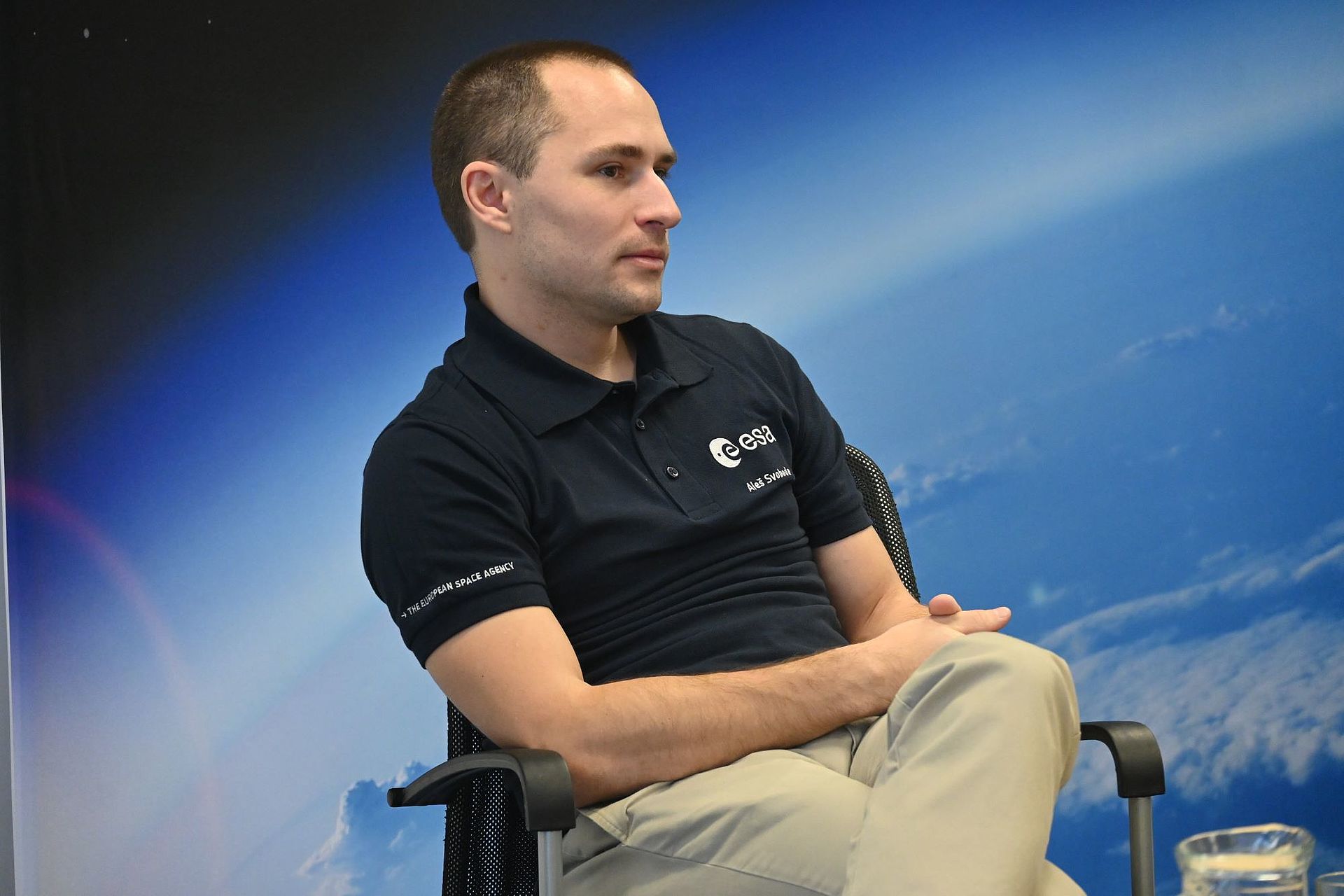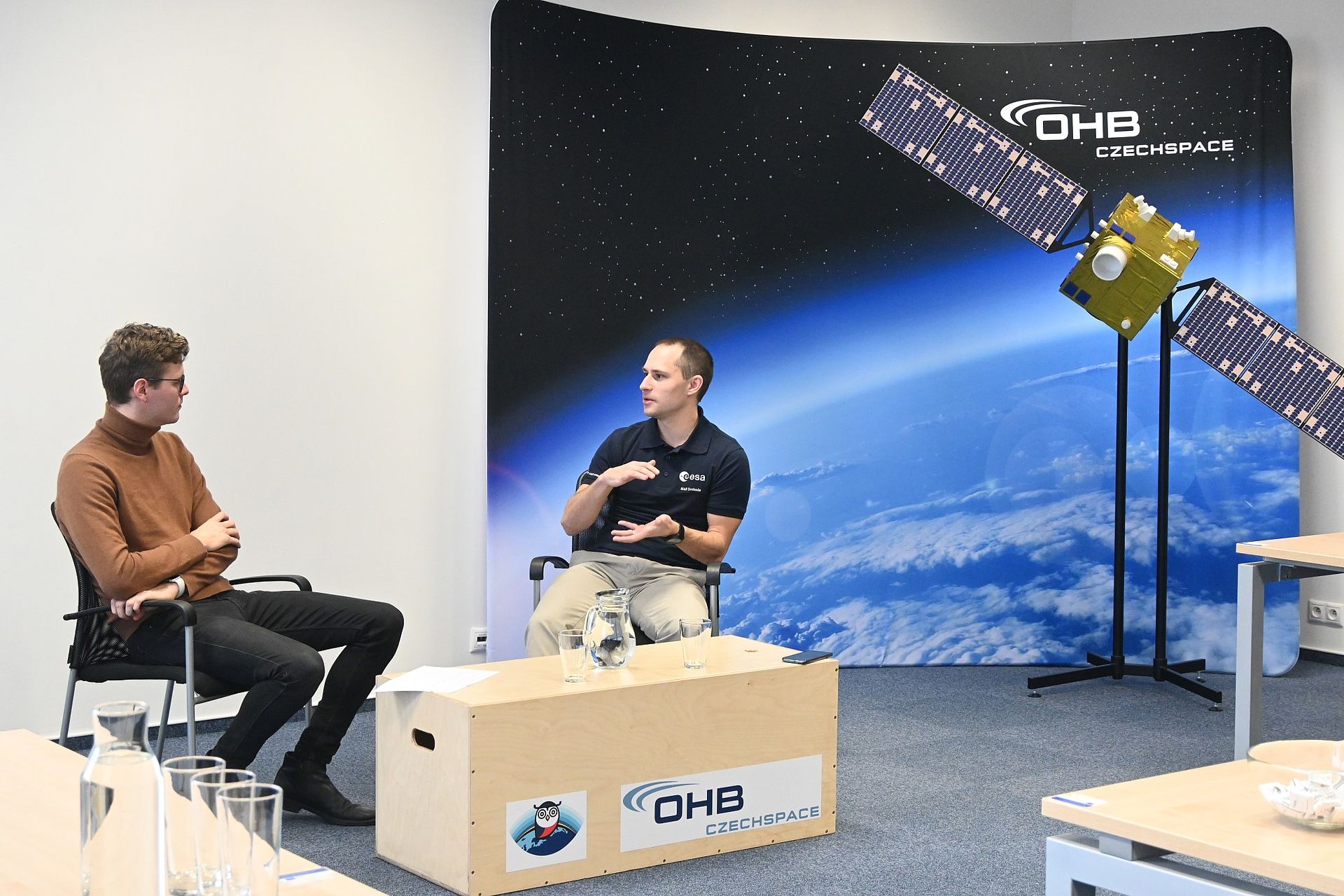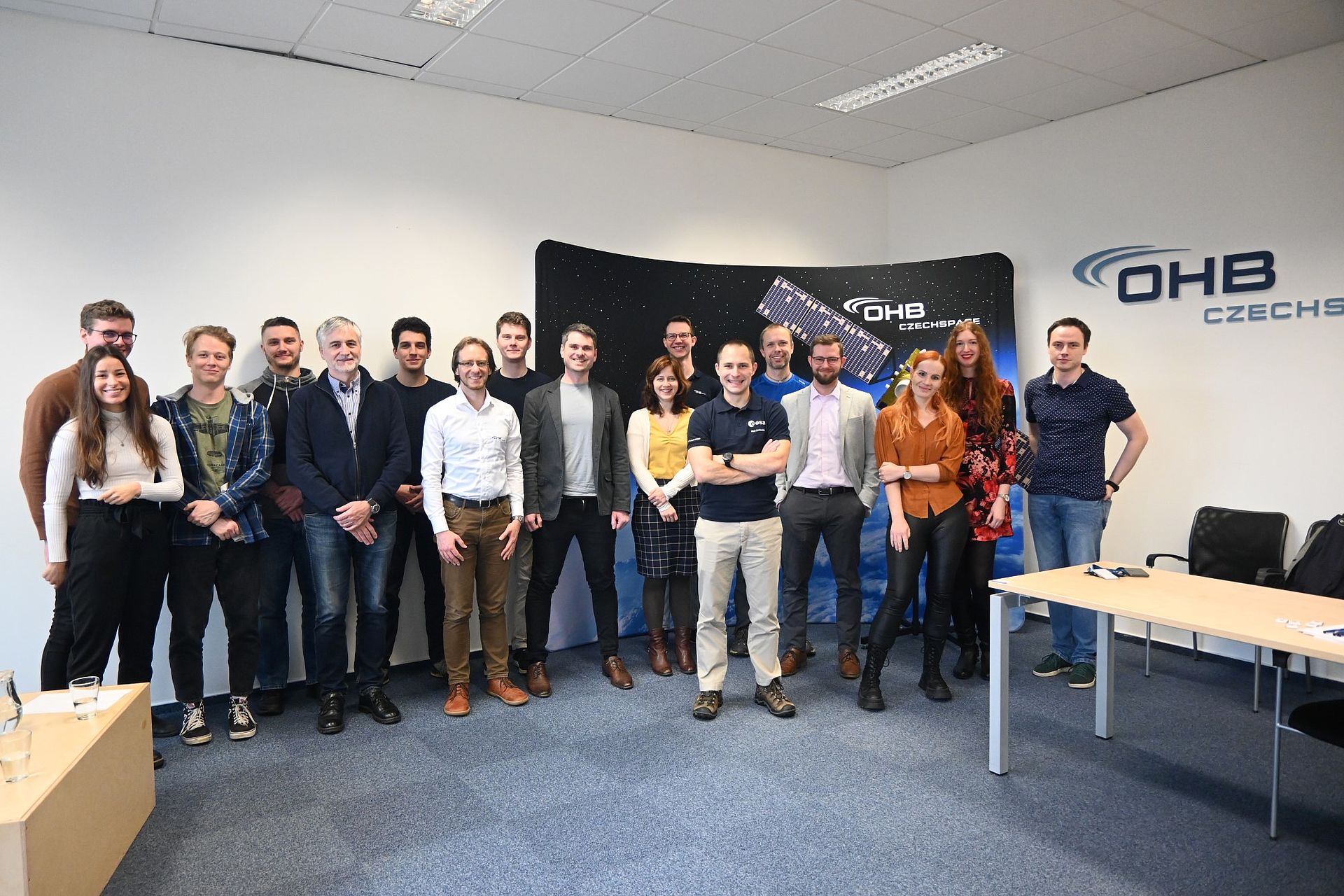At the beginning of this year, European Space Agency's backup astronaut Ales Svoboda accepted invitation to a panel discussion at OHB Czechspace. The discussion for students of aeronautics and astronautics of BUT was held in the form of an interview, which was led by Ondrej Slajs, one of our employees.
Aviation:
When you started your studies at the University of Defence, how did your training look like? How long was the period from the beginning of the university to the final practice in Gripen?
The form of study at the University of Defence changes each year, but the principle is still the same. During the studies, you undergo basic training in Pardubice at the Flight Training Centre. The purpose is to teach students the basics in approximately 50 flying hours, because about 90% of them have never been in an aircraft before. Important are the basics of advanced piloting techniques, aerobatics and group flying. This activity was after the end of the 2nd year and lasted about 4 months.
What type of aircraft did you first fly?
In the beginning, we trained on Zlin 142 propeller aircrafts. After this training, there is a selection process and those who are selected continue to the L-39 Albatros and L-159 Alca jet aircraft. From the L-159 pilots, future Gripen pilots are then selected, and this is the path I followed as well.
How is the training from a medical perspective and how can a candidate prepare for overload?
As pilots, we do aeromedical training, which starts at the University of Defence. There is a dedicated course on this subject, aeromedical psychophysiology, with lectures from the Institute of Aviation Medicine. Next, there is a detached unit at the Military University Hospital, where is a unit dedicated to aviation medicine. They have barochamber facilities, where hypoxia is demonstrated, explosive decompression training, etc.
At the same time, there is no centrifuge in the country. This trainer is used by pilots, who fly Gripen, in Sweden. The trainer is important, because Gripen and other supersonic aircrafts are specific, as they can sustain overloads for quite a long time, unlike aerobatic aircrafts. What is specific to the Gripen is especially its high overload gradient (6G/s) and also that it can stay at this high overload for several tens of seconds.
I would like to stick to the training, but let´s briefly discuss a slightly different aspect. I saw that you train in-flight refuelling with Gripens. How do you train for that?
For this training, we need a tanker, which the Czech Republic does not own, so we depend on our alliance partners. Since we are part of the MRTT (Multi-Roll-Tanker-Transport) project, we can use as an alliance partner together with our partners Airbus 330, which has been converted into a tanker. Unfortunately, this refuelling option is slightly unfortunate as the refuelling probe is at the back and not in the field of view, so it takes a lot of practice.
When refuelling in-flight, it is possible to refuel about half a ton of fuel per minute. Think of it as a flying petrol station with planes spinning around. Most of the time, you will fly up to the tanker in a foursome and everyone will take turns.
I wonder how you felt when you got on a supersonic aircraft.
It was great. I had flown the Alca before and I was glad to be in a more powerful aircraft like Gripen. We have been on a couple of visits of the Saab factories that are the Gripen manufacturers, and they also employ psychologists and people who work on the user interface, the human-user interface, and they were fine-tuning all the details from the colour of the display to the ergonomics of the control knobs. This was a very nice change for the pilot.
Is there anything you would like to see on the Gripen? What would you change?
The Gripen is slightly underpowered. When I had the opportunity to fly the Rafale, you can really tell that the Rafale has two engines and the Gripen only one. I would welcome the options that are generally available on Gripen, but we do not have them here, like a sight on the helmet and other equipment.
Aerospace:
I'd like to move on to how you became a backup astronaut. What did the application process consist of?
The application consisted of a structured resume, a cover letter, and then filling in online questionnaires.
How long did it take you to write the cover letter? How long was it?
The cover letter took me a really long time to write, because I knew that it would not only be part of the initial screening, but that if I managed to get through to the other rounds, the Director General of the European Space Agency would read it in the final round. So, I wanted it to be really good.
Did you consult it with anyone?
Yes, I asked my friend from my studies in the United States for advice. He's a psychiatrist and we discussed the psychological side. I knew it would be crucial in the next rounds. Next, I had my friend from the squadron read the paper, who can always give good advice and is aware of the human dimension of the work. Then, I connected through the fighter pilot community with a NASA astronaut, who is now in the Artemis program that referred me to an ESA astronaut, who was kind enough to take the time to consult my cover letter.
You went through a six-round selection process, which round did you find the most difficult?
The biggest element of chance was probably in the first round. In this round, there was the biggest "dropout" of participants. 22,000 people applied for the first round and 1,400 were selected for the next round. Nobody knew which criteria they were using to select the participants. There were even various conspiracy theories. It was not known whether they had used some smart algorithm to select the candidates to go to the second round, but in the end, after the selection process, ESA said that the selection was done by humans, so they had really worked at it.
What followed in the other rounds of the selection process?
The next rounds were psychological testing. There were 2 rounds of psychological testing. The first was focused on performance and psychomotor skills, the second on teamwork skills (pairs, foursomes).
Do you think your profession was an advantage for the selection process?
I think so. One of the things that was assessed was operational experience. Another undeniable advantage was the experience of psychological testing in the military, so I could kind of anticipate what I was getting into.
Do you think your doctorate helped you?
I think it certainly did. There were a lot of pilots applying, some of them were much more experienced than me. Since it was desirable for a given candidate to be experienced in their field, and also have a broad outlook, the combination of flying skills and a doctorate was appropriate.
Conclusion:
What are you currently looking forward to? What is ahead of you?
Some activities will start in the next year in the range of one month. This year, we are supposed to learn about aspects of Human Space Flight, visit ESA facilities and generally get to know the organisation. Intensive training and preparation would begin, once I or one of my colleagues is assigned to a specific mission.
Are you required to do sports? As a pilot, is it in your job description that you should do sports?
According to the job description, we would have to put in 6 hours of physical training per week. Honestly, when you add up all the required activities, you find out that there are not that many hours in a week at all. We all try to take care of our health and keep physically fit according to our own conscience. I personally go jogging.
Did you have to guarantee your skilfulness somehow?
As far as the mechanical skills that they required from you in the entrance exam, we had emergency drills, like making a filter out of a sock and other things that were available. This scenario simulated the Apollo 13 rescue.




